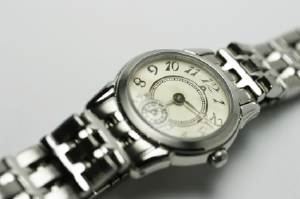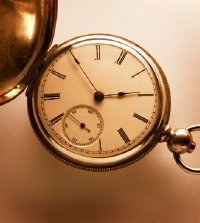|
The Allure of Antique WatchesAntique watches have been a favorite collectible for many years. One of the finest gifts an American young man of the 1940’s or 1950’s could receive was his father’s or grandfather’s antique watch. In an era of wristwatches, an antique pocket watch was a nostalgic reminder of days gone by when men wore vests and kept a pocket watch in a slot in the vest specially designed for them. The “bling” of the day was the gold chain between the watch fob in one pocket and the watch on the other side. Men of importance didn’t just quickly glance at the time on their wristwatches; they withdrew their now antique pocket watches and consulted the time. These watches were fine precision instruments that needed daily winding, that calming ritual that said that the world was in proper order.
Early Antique watchesThe earliest watches
were developed in France and Germany during the early sixteenth century but by the late sixteenth century England and Switzerland boasted active watchmaker’s guilds. Through the end of the seventeenth century, all of the watches were crafted individually and by totally by hand.
The precision of these watches became a prized commodity as the industry progressed in the late 1700’s into the mid 1800’s. The pace of life changed as people needed to arrive at work in the factory on time or meet other businessmen at the appointed hour. The antique pocket watches became thinner and sported less ornamentation as they became utilitarian rather than luxury items. Ladies were the first to wear these watches on the wrist. While Queen Elizabeth possessed a wristwatch in 1571, it wasn’t until the late 1800’s that women routinely wore wristwatches. Men adapted to wristwatches during World War I due to their utility to those in the armed forces. It was much easier for a pilot to consult a wristwatch during flight than fumble for one of those antique
pocket watches
!
Modern Watches
Today’s utilitarian watches reflect our modern mass production and throw-away society concepts. By the 1960’s quartz watches replaced the fine craftsmanship seen in the old antiques. In many situations, buying a new quartz watch was as cost-effective as repairing the old one. However, by the 1980’s the mechanical watches of the past, including both recent and antiques, gained in popularity as shown by their increased sales in the used and antique watch markets. While many people now consult their cell phone rather than a watch for the current time, a significant number of people are beginning to appreciate the fine qualities of the mechanical antique watch. Need more information? Leave Antique Watches and return Home |





